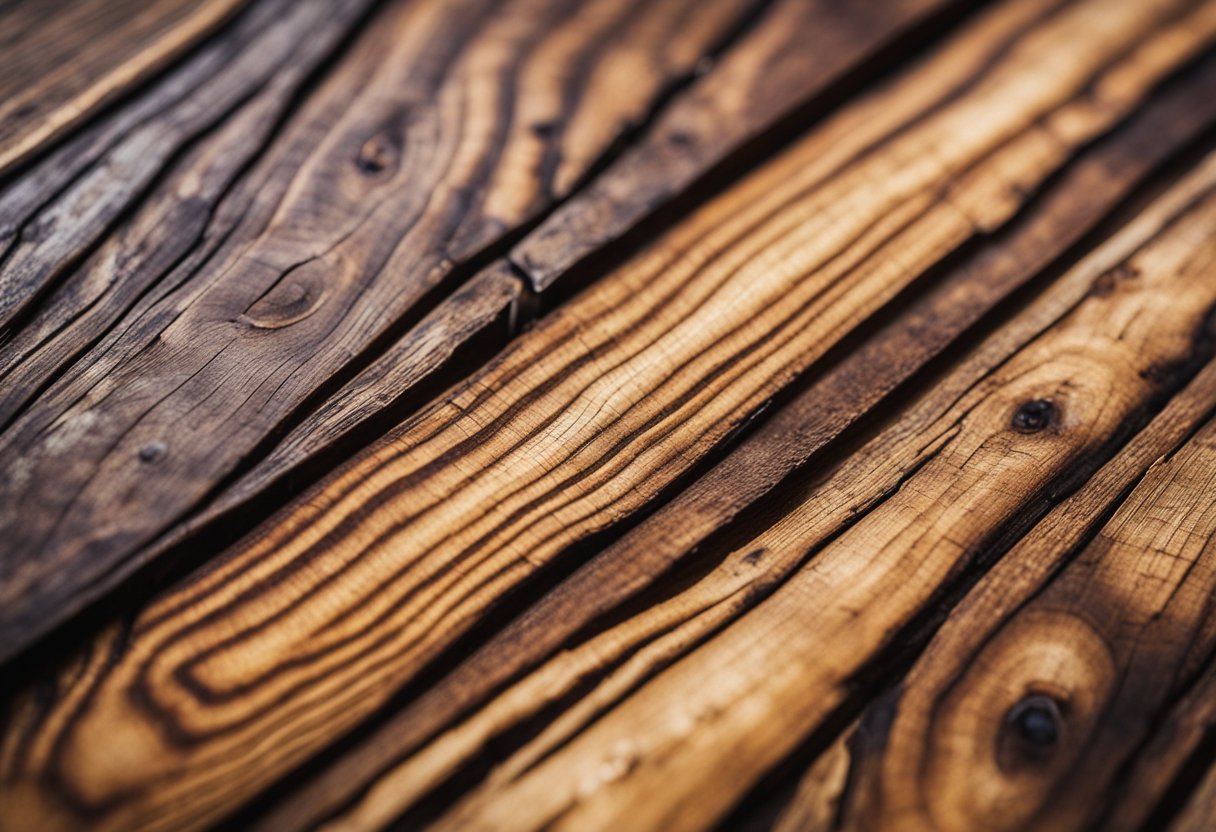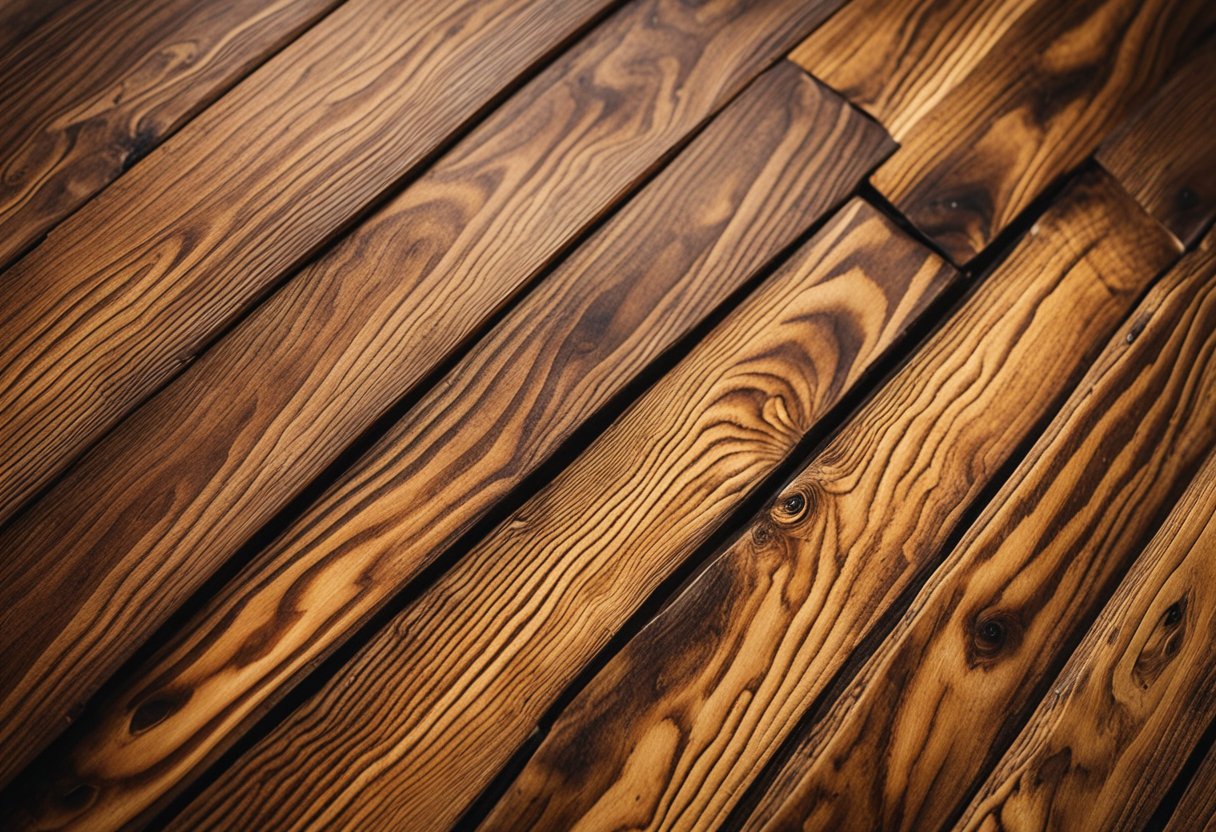I have always been fascinated by the art of woodworking. From creating unique designs to sanding and staining, every step of the process is an opportunity to showcase one’s creativity and skill. One of the most important aspects of woodworking is finishing, as it can make or break the final product. In this article, I will be discussing the application of Tru-Oil over stain, a technique that has become increasingly popular among woodworkers.
Understanding Tru-Oil Over Stain is crucial to achieving a smooth and long-lasting finish. Tru-Oil is a popular brand of gunstock finish that is known for its durability and ease of application. When applied over stain, Tru-Oil can enhance the color and texture of the wood, resulting in a beautiful and unique finish. However, it is important to note that not all stains are compatible with Tru-Oil, and proper preparation is necessary to ensure a successful outcome.
Key Takeaways:
- Tru-Oil can be applied over stain to enhance the color and texture of the wood.
- Proper preparation is crucial to achieving a successful finish.
- Tru-Oil is a durable and easy-to-apply finish that is popular among woodworkers.
Understanding Tru-Oil Over Stain
https://www.youtube.com/watch?v=8lO-gIyIYV8&embed=true
As a woodworker, I understand the importance of finishing woodwork. The final step of the manufacturing process is crucial in giving the wood surface its desired characteristics such as enhanced appearance and increased resistance to moisture. Tru-Oil is one of the most popular finishes for gun stocks, musical instruments, and other woodwork. It is easy to apply, durable, and gives a beautiful shine to the wood surface.
When it comes to applying Tru-Oil over stain, there are a few things to consider. First and foremost, the stain must be completely dry before applying Tru-Oil. Applying Tru-Oil over wet or tacky stain can cause the stain to smear or lift, resulting in an uneven finish. Therefore, it is important to wait for the stain to dry completely before applying Tru-Oil.
It is also important to note that Tru-Oil works best over oil-based stains. Oil-based stains penetrate the wood surface, allowing Tru-Oil to adhere better and produce a smoother finish. Water-based stains, on the other hand, tend to sit on the surface of the wood and can cause Tru-Oil to bead up or not adhere properly.
Another thing to consider is the existing finish on the wood surface. If the wood has an existing oil finish, such as linseed oil or tung oil, it is recommended to sand down the surface before applying Tru-Oil. This will help the Tru-Oil penetrate the wood surface and adhere better. However, if the existing finish is a lacquer or varnish, it is best to remove the finish completely before applying Tru-Oil.
In summary, Tru-Oil is a great finish to use over stain, but it is important to ensure that the stain is completely dry, use an oil-based stain, and consider the existing finish on the wood surface. By following these guidelines, you can achieve a beautiful and durable finish on your woodwork.
Preparation Process
Before applying Tru Oil over stain, it is important to prepare the wood surface properly. The preparation process involves sanding and scuffing, selection of stain, applying stain, and drying time.
Sanding and Scuffing
The first step in preparing the wood surface is sanding and scuffing. Sand the wood surface with fine sandpaper to remove any rough spots or imperfections. Scuffing the surface with steel wool or a scotch-brite pad will help the stain penetrate the wood surface better. Ensure that the wood surface is clean and free of any dust or debris before applying the stain.
Selection of Stain
The selection of stain is critical in achieving the desired results. Choose a stain that complements the wood grain and color. Oil-based stains are ideal for use with Tru Oil as they penetrate the wood surface better than water-based stains. Walnut stain and Minwax are popular choices for staining wood.
Applying Stain
Apply the stain liberally with a brush or cloth, working it into the wood surface. Ensure that the stain is evenly distributed and there are no drips or runs. Wipe off any excess stain with a clean cloth. Allow the stain to dry completely before applying Tru Oil.
Drying Time
Drying time is crucial in achieving a smooth and even finish. Allow the stain to dry completely before applying Tru Oil. The drying time will vary depending on the type of stain used and the humidity levels. It is advisable to follow the manufacturer’s instructions for drying time.
In conclusion, proper preparation is key to achieving a smooth and even finish when applying Tru Oil over stain. Sanding and scuffing, selection of stain, applying stain, and drying time are critical steps in the preparation process. By following these steps, you can achieve a beautiful and durable finish that will last for years to come.
Application of Tru-Oil
https://www.youtube.com/watch?v=A82_MDDhJlo&embed=true
When applying Tru-Oil over stain, it is important to follow a few key steps to ensure a smooth and even finish. Here are the steps I follow for applying Tru-Oil to achieve a mirror luster and protection for my wood project.
First Coat
The first coat of Tru-Oil should be applied thinly with one wipe, making sure to not rub it back and forth too much as it could pick up or loosen some of the stain. It is best to apply the first coat of Tru-Oil after the stain has dried to the touch. Tru-Oil finds its way into the wood on which it is applied to intensify its color and heighten grain, after which it dries into a tough, brilliant coating when exposed to air.
Subsequent Coats
After the first coat, it is best to wait at least 24 hours before applying subsequent coats. When applying the second coat and beyond, it is important to use a wet-sand method to ensure a smooth finish. Wet-sanding between coats with a fine-grit sandpaper, such as 600 grit, will help to remove any bumps or imperfections in the finish and will allow for better adhesion of subsequent coats.
Final Coat
When applying the final coat, it is important to use a steel wool pad to buff the surface of the wood. This will help to create a mirror luster and will also remove any remaining imperfections in the finish. After the final coat has been applied, it is best to wait at least 72 hours before using or handling the wood project to ensure that the finish has fully cured.
In conclusion, applying Tru-Oil over stain requires patience and attention to detail. By following these steps, you can achieve a beautiful and durable finish that will protect your wood project for years to come.
Comparison with Other Finishes
https://www.youtube.com/watch?v=PKMzNfd-mXQ&embed=true
When it comes to finishing woodwork, there are many options available. Each type of finish has its own unique properties, advantages, and disadvantages. In this section, I will compare Tru Oil with other popular finishes, including oil-based finishes, varnish and shellac, and water-based stains.
Oil-Based Finishes
Oil-based finishes are a popular choice for many woodworkers. They offer a natural look and feel and are easy to apply. The most common oil-based finishes are made from natural oils, such as linseed oil. These finishes penetrate the wood and provide a protective layer that enhances the natural beauty of the wood.
Compared to Tru Oil, oil finishes take longer to dry and require more coats to achieve a similar level of protection. However, they are more durable and provide better protection against moisture and heat. If you are looking for a natural-looking finish that is easy to apply and provides good protection, an oil finish may be a good choice.
Varnish and Shellac
Varnish and shellac are two popular finishes that are known for their durability and protective properties. Varnish is a synthetic finish made from resins and solvents, while shellac is a natural finish made from the secretions of the lac bug.
Compared to Tru Oil, varnish and shellac provide better protection against scratches and wear. They also dry faster and require fewer coats to achieve a similar level of protection. However, they are more difficult to apply and require more skill to achieve a smooth finish.
Water-Based Stains
Water-based stains are a popular choice for those who are looking for an environmentally friendly alternative to oil-based stains. These stains are made from water and pigments and are easy to apply. They also dry quickly and provide good protection against fading.
Compared to Tru Oil, water-based stains are less durable and require more coats to achieve a similar level of protection. They also do not penetrate the wood as deeply as oil-based finishes, which can result in a less natural look and feel. However, if you are looking for an easy-to-apply finish that is environmentally friendly, a water-based stain may be a good choice.
In conclusion, each type of finish has its own unique properties and advantages. When choosing a finish, it is important to consider the type of wood you are working with, the level of protection you need, and the look and feel you want to achieve.
Additional Tips and Techniques
https://www.youtube.com/watch?v=TinQhp4gH_8&embed=true
When it comes to using Tru Oil over stain, there are a few additional tips and techniques that can help you achieve the best results. Here are some things to keep in mind:
-
Ethoxylated alcohol: Some people recommend using ethoxylated alcohol as a wetting agent when applying Tru Oil. This can help the oil penetrate the wood more easily and evenly. However, it’s important to note that ethoxylated alcohol can be toxic and should be used with caution.
-
Alcohol-based leather dye: If you’re looking to add color to your wood before applying Tru Oil, you might consider using an alcohol-based leather dye. These dyes are designed to penetrate leather, but they can also be used on wood. Just be sure to test the dye on a small, inconspicuous area first to make sure you’re happy with the color.
-
Artist’s acrylic paint: Another option for adding color to your wood is to use artist’s acrylic paint. This can be a good choice if you’re looking for a specific color that you can’t find in a stain or dye. Just be sure to thin the paint with water so that it doesn’t obscure the wood grain.
-
Stock finishing: If you’re finishing a gun stock with Tru Oil, it’s important to keep in mind that the finish will be more durable if you build up multiple thin coats rather than one thick coat. This will also help prevent the finish from cracking and peeling over time.
Overall, Tru Oil is a versatile and easy-to-use finish that can give your wood a beautiful, durable finish. With a little practice and some experimentation, you can achieve great results with this popular product.
Conclusion
In conclusion, Tru Oil can work over stain if certain considerations are taken into account. The first thing to consider is the type of stain being used. Oil-based stains work best with Tru Oil, while water-based and alcohol-based stains may not be as effective. It is also important to ensure that the stain is completely dry before applying Tru Oil.
When applying Tru Oil over stain, it is recommended to apply it with one wipe, rather than rubbing it back and forth. This helps to prevent the Tru Oil from picking up or loosening the stain. Sanding down the stock before applying Tru Oil is not always necessary, but it can help to achieve a smoother finish.
Tru Oil is a popular choice for finishing musical instruments and other items that are frequently handled. It is a drying oil that dries quickly, resists water damage, and gives wood a natural darkening effect. While Tru Oil can be used over stain, it is important to follow the proper procedures to ensure the best results.
Frequently Asked Questions
https://www.youtube.com/watch?v=VQJm_fzynkg&embed=true
Can you stain over Tru oil?
Yes, you can stain over Tru oil. However, it is important to note that the stain may not penetrate the wood as well as it would on bare wood. This is because the Tru oil creates a barrier on the surface of the wood, which can prevent the stain from soaking in. It is recommended to sand the surface lightly before applying the stain to help it absorb better.
Can I put an oil finish over a stain?
Yes, you can put an oil finish over a stain. In fact, many woodworkers prefer to use an oil finish over a stain because it can enhance the color and bring out the natural beauty of the wood. Just make sure that the stain is completely dry before applying the oil finish.
Can you use Odie’s oil over stain?
Yes, you can use Odie’s oil over stain. Odie’s oil is a versatile product that can be used on a variety of surfaces, including stained wood. It can help to protect the surface from moisture and other environmental factors, as well as enhance the color and grain of the wood.
Can you use Tru oil over water based stain?
Yes, you can use Tru oil over water-based stain. Tru oil is a type of oil finish that can be used on a variety of surfaces, including water-based stains. However, it is important to note that the water-based stain may not penetrate the wood as well as an oil-based stain, which can affect the final result.
Does Tru-oil darken wood?
Yes, Tru-oil can darken wood. When applied to bare wood, Tru-oil can enhance the natural color and grain of the wood, making it appear darker and richer. However, the degree to which it darkens the wood can vary depending on the type of wood and the number of coats applied.
Tru-Oil Walnut stain
Tru-Oil Walnut stain is a popular choice for woodworkers who want to enhance the natural color and grain of their walnut wood projects. It is a type of oil finish that can be applied directly to the wood, or over a stain, to help protect the surface and enhance its appearance. When applied to walnut, Tru-Oil Walnut stain can help to bring out the warm, rich tones of the wood, making it a popular choice for furniture, cabinets, and other woodworking projects.

Hi, I’m Sal Muller of Tooltrip.com. My DIY experience led me to understand essential power tools for home projects. Tooltrip.com guides enthusiasts and professionals in choosing right tools for any job. I provide concise top tool reviews for easier, efficient DIY.




